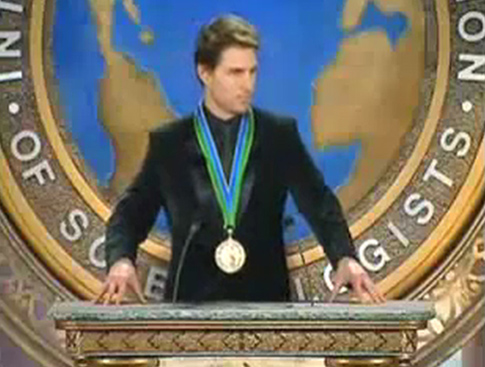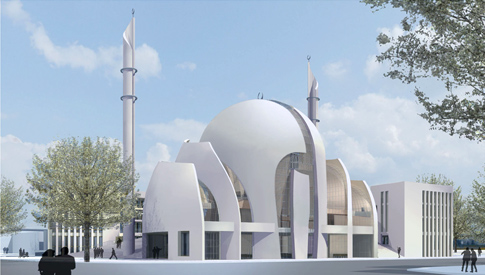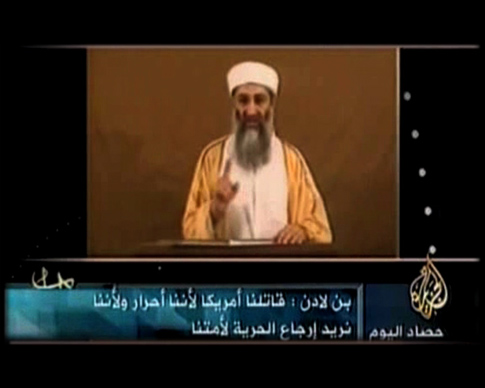
Jerry B. Jenkins & Tim LaHaye: Left Behind. Eternal Forces, 2006
The computer game Left Behind is based on the eponymous series of novels – very successful among the evangelical movement in the USA – by the Christian authors Jerry B. Jenkins and Tim LaHaye, a one-time pastor of a Baptist "Mega-Church." Players find themselves in the scenario of an apocalyptic final battle between good and evil after pious Christians have already ascended into Heaven. The goal of the game is to prevent the antichrist taking over the world. To do this, you have to build churches, reach people with missions and, if necessary, kill them. After every bloody deed, players' so-called "soul points" diminish and have to be restored by prayer in order to carry on the fight for Christian righteousness.

Jerry B. Jenkins & Tim LaHaye, Left Behind. Eternal Forces, 2006
PC-Game, video collage and 12 novels
Gamescouts: Adam Rafinski, Phillip Schulze
Videofootage: Adam Rafinski
video collage: Production ZKM | Center for
Art and Media Karlsruhe, 2008
|

Tom Cruise, Scientology-Video [Medal of Valor], 2008
The Church of Scientology bases its activities on the book Dianetics (1950) by its founder L. Ron Hubbard, the cult figure in his own strategic design for a religion. How scientology denotes its practices, like, Auditing, Processing or Clear, is reminiscent of technical functions, such as, for example, of a video or tape recorder. This demonstrates how close scientology's understanding of human beings as a medium is to techniques in media and in psychology.
The video to be shown is an internal training video, in which the actor Tom Cruise advocates the "knowledge about knowledge" [etymological for scientology] to the rhythm of the music for his film hit Mission Impossible. It did the rounds in the internet at the beginning of 2008 and, however, generated anti-propaganda by dint of such a context outside of the sect. A further video from the scientologists shows the actor at the awarding of a "Medal of Valor" by the sect. Cruise harangues his audience in a frenetic speech of thanks.
Using popularity for advertising products and ideologies is not new, but these videos do show particularly clearly how these areas are becoming increasingly blurred – the person of the actor, his film roles and his religious convictions are inextricably interwoven: the actor becomes the medium for his faith.

Tom Cruise, Scientology-Video [Medal of Valor], 2008
Tom Cruise, Scientology-Video [Monologue], 2004
video (colour, sound)
0:53 min. and 9:35 min., loop
http://de.youtube.com/watch?v=H-C-wupe76E&feature=related (15.10.2008)
http://de.youtube.com/watch?v=UFBZ_uAbxS0 (15.10.2008)
|
|

3D-Visualisierung der geplanten Zentralmoschee in Köln, Stand: Oktober 2008
The structures on the Temple Mount in Jerusalem reflect the changing history of Judaism, Islam and Christianity; at the same time, it is, together with the city of Jerusalem, the best known symbol of the longstanding, politically and religiously motivated conflict in the Near East.
A similar conjunction of religion, politics and architecture has also been on view in Cologne. Out of their concern about a growing islamisation, citizens’ initiatives have been trying to prevent the planned erection of a central mosque there: the mosque has become the metaphor for a general fear of foreign infiltration, which fails to recognise that Islam has long since become a part of German identity. Cologne cathedral, the historical trademark of the city, is one of the largest gothic cathedrals and is crucially important for the Catholic Church; it is, however, also an early symbol of a German national consciousness, which formed in the 19th century. It displays, therefore, the arguably perfect antagonist in the debate about the building of the central mosque, in which houses of prayer furnish symbols for ways of looking at the world and for political programmes and flashpoints for cultural conflicts.
 Debate on Cologne Mosque project Debate on Cologne Mosque project
documentary material
(architectural designs, photographs, graphics, texts)
courtesy Architekturbüro Paul Böhm,
DITIB/Türkisch-Islamische Union der Anstalt für Religion e.V.
und die Bürgerbewegung Pro Köln e.V.
|

video message by Osama Bin Laden, 2004
Bin Laden utilises the medium of video chiefly for effectively distributing his messages to the world public. Like politicians, actors or artists, he uses his media appearances in the form of video messages to position himself effectively and strategically within the realm of the media. Viewed as a quasi-artistic production of a media spectacle under the sign of terrorism, the attack on the World Trade Center managed to involve in a virtuoso manner all the available capacities of mass media reporting.
On October 29, 2004, just preceding the imminent presidential elections in the US, a video message from Osama bin Laden, in which he addresses the American public, offering explanations on why he attacked the World Trade Center in New York, was broadcast on television. In this video, Bin Laden does not present himself as a Mujahid (holy warrior) in military uniform with a kalashnikoff as symbol by his side, but rather appears in the dress of a Saudi religious teacher, with which he stages himself as a Byzantine icon.

video messages by Osama Bin Laden
(Usāma ibn Muhammad ibn Awad ibn Lādin), 2001, 2004
video (colour, sound)
5 min., loop
5:40 min., loop
http://de.youtube.com/watch?v=ADhfC6KjcJQ (15. 10. 2008)
|
|



